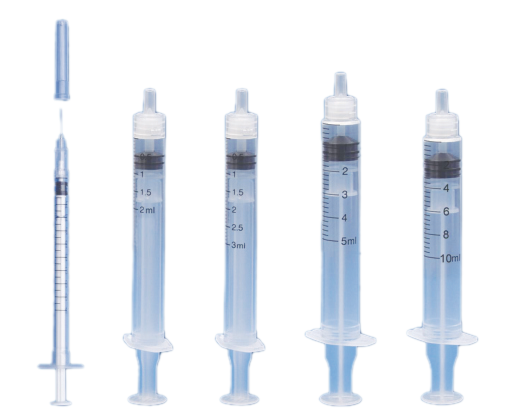
Safety Syringes
Healthcare workers face a high risk of needlestick injuries, which can cause serious infections or diseases. In order to reduce this risk, the latest innovation in safety syringes is here. Learn more about how these devices are revolutionizing healthcare and helping to keep everyone safe from potential harm!
A needlestick injury is a very dangerous type of wound that can occur when someone is handling a sharp object such as a needle. If the person handling the needle is not careful, they can easily puncture their skin and cause a serious wound. Needlestick injuries are particularly dangerous because they can easily become infected. If the person who sustains the injury does not receive prompt medical treatment, the infection can spread quickly and potentially cause life-threatening complications. Fortunately, there are now safety syringes available that can help to prevent needlestick injuries from occurring. These syringes have a special safety mechanism that prevents the needle from being exposed unless the user deliberately activates it. This means that there is far less chance of an accidental needle stick injury occurring. If you are handling needles or other sharp objects, it is important to be as careful as possible to avoid sustaining a needlestick injury. However, if you do sustain such an injury, it is essential to seek medical treatment immediately in order to minimise the risk of developing a serious infection.
Needlestick injuries are a serious problem for healthcare workers. They can cause infections and spread diseases. They can also be very painful. Luckily, there are ways to prevent needlestick injuries. Here are some tips:
1. Use safety syringes. Safety syringes have a mechanism that protects the user from getting stuck by the needle. Make sure to use them whenever you can.
2. Be careful when handling needles. Handle needles with care. Avoiding touching the sharp end of the needle is the best way to prevent getting stuck by it. If you must touch the needle, make sure to do so carefully and with gloves on.
3. Put used needles in a puncture-proof container immediately. Do not leave used needles lying around where someone could accidentally stick themselves with them. Put them in a puncture-proof container right away so they can be disposed of properly later.
4. Get vaccinated against Hepatitis B and HIV/AIDS if you work with needles regularly.
If you work with needles regularly, it is important to get vaccinated against Hepatitis B and HIV/AIDS . These diseases can be spread through needlestick injuries, so it is best to be protected against them beforehand .
There are many different types of safety syringes available on the market today. While there is no one definitive type of safety syringe that is best for all situations, there are some general tips that can help you select the right type of syringe for your needs. When choosing a safety syringe, it is important to consider the type of needle that will be used with the syringe. There are two main types of needles: blunt and sharp. Blunt needles are typically used for intramuscular injections and are less likely to cause puncture wounds. Sharp needles, on the other hand, are usually used for intravenous injections and have a higher risk of causing puncture wounds. It is also important to consider the size of the needle when selecting a safety syringe. Needles come in different sizes, from very thin (23 gauge) to thick (16 gauge). The thickness of the needle will determine how deep the injection will be and how much tissue damage will occur. Thinner needles cause less tissue damage but may not be able to reach deeper muscles. Thicker needles can cause more tissue damage but may be necessary to reach deeper muscles. Once you have considered the type of needle and the size of the needle, you can then select a safety syringe based on the features that are most important to you. Some safety syringes have retractable needles, which helps prevent accidental needle sticks after an injection is complete. Other safety syringes
The future of healthcare workers and the reduction of needlestick injuries is looking promising. With the latest innovation in safety syringes, there is potential for a significant reduction in the number of needlestick injuries suffered by healthcare workers each year. Safety syringes are designed to prevent needle stick injuries by incorporating a number of safety features into the design of the syringe. These features include a retractable needle, a shielded needle tip and a locking mechanism that prevents accidental needle sticks. The use of safety syringes has been shown to significantly reduce the number of needlestick injuries suffered by healthcare workers. A study conducted by the Centers for Disease Control and Prevention (CDC) found that the use of safety syringes reduced the incidence of needlestick injuries by 96%. The benefits of using safety syringes are not just limited to reducing the number of needlestick injuries. Safety syringes also have the potential to save healthcare facilities money by reducing the cost of treating needlestick injuries. The CDC estimates that the annual cost of treating a needlestick injury is $3,000. When you consider that there are approximately 385,000 needlestick injuries each year in the United States alone, it is easy to see how using safety syringes can have a significant impact on the bottom line for healthcare facilities. While there is no doubt that safety syringes offer many benefits, it is important to note that they are not a substitute for proper technique and training. It is essential that healthcare workers receive regular training on the safe use of syringes in order to ensure that they are able to make the most of their safety syringe devices.